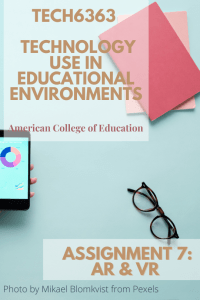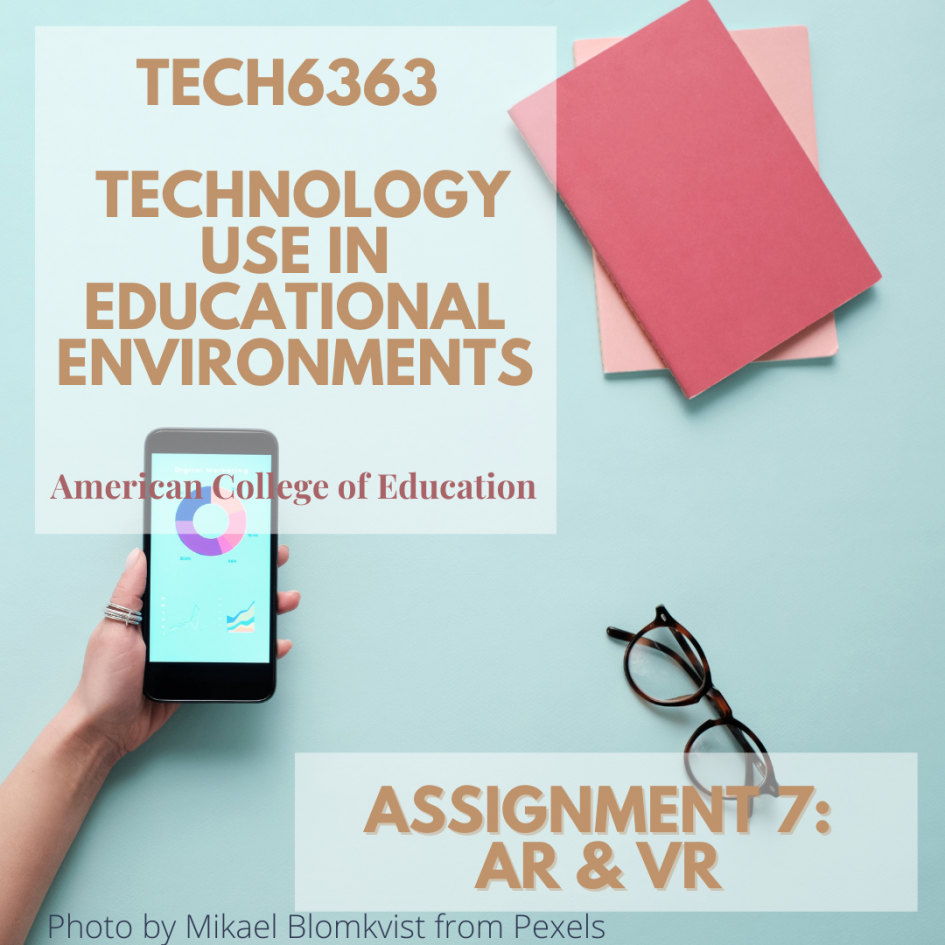Community-based AR & VR Lesson Ideas
Community as a classroom is an unexpected way to incorporate augmented reality (AR) and virtual reality (VR). The approach for these lesson ideas relies on Dani’s statement “turn communities into classrooms by encouraging teacher educators, teachers, and students to use the community, public lands, and other special places as nested resources to promote formal school learning” (p 46, 2019). The additional benefit for the community includes recognition of the integration between the school and the community and an opportunity for the community to contribute in an educational role.

Each assignment is through the practitioners’ lens. How can AR and VR best complement the current classroom experiences in a middle grade’s social studies and science classroom respectively? This assumption is for a hybrid or in-person setting.
Social Studies
Local community history is important to connect curriculum to student’s daily lives. History can also be taught while building empathy in students (Sweeney et al., 2018). Social Studies classes in middle grades should try to be engaging. Introducing augmented virtual (AR) or virtual reality (VR) could be an engagement strategy for the social studies classroom.
I propose using AR to create a guided tour of the local city. Historical context, census information, and popular culture facts could all be woven into one tour of the city. Each student could take one point of interest and research geographic, historical, and census data for significant information. Students will use a 360-degree camera to record the selected location. Students will upload the image to ThingLink and provide three to four separate media clips presenting the research in each category. The ThingLink image will be embedded on a Google map for digital distribution and a laminated QR code will be placed at the physical location for pedestrians in the community.
Science
Pollution is a science unit that could be more community-based and has the added benefit of spiraling the topic and project throughout the science curriculum in K-12. The research will begin in class on local areas of human pollution in the community. As sites are assigned students will research the individual characteristics of each location’s pollution problem and research solutions. Students will write persuasive scripts with action steps mitigating pollution for the community members. Students will identify success criteria and a metric in order to measure the impact of their campaign. Augmented reality video creation by students will happen on-site and posting of the AR will be accessible on-site by QR codes for community members with mobile devices. In this lesson, students need a 360-degree camera and ThingLink to tag and add media to the image. ThingLinks will be embedded on a Google map for an increasing catalog of points of interest in the community. Students will generate QR codes and laminate to post in physical locations. In this lesson idea, QR plays may be a metric students use to measure success.
References
Dani, D. (2019). A community and place-based approach to middle childhood science teacher education. Middle School Journal, 50(2), 45–52.
Sweeney, S. K., Newbill, P., Ogle, T., & Terry, K. (2018). Using Augmented Reality and Virtual Environments in Historic Places to Scaffold Historical Empathy. TechTrends: Linking Research & Practice to Improve Learning, 62(1), 114–118. https://doi.org/10.1007/s11528-017-0234-9






1 Pingback